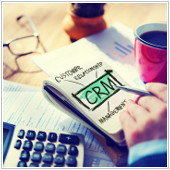It’s hard to deny how reliable Skype is as a VoIP telephony system. Having something good doesn’t mean you should stop at that; for the sake of your small- or medium-sized business, you should always be on the lookout for the next best thing that helps facilitate your company’s growth. Enter Skype for Business. We’ve […]
 It’s hard to deny how reliable Skype is as a VoIP telephony system. Having something good doesn’t mean you should stop at that; for the sake of your small- or medium-sized business, you should always be on the lookout for the next best thing that helps facilitate your company’s growth. Enter Skype for Business. We’ve compiled three main reasons why you should consider utilizing this tool as opposed to relying on its predecessor.
It’s hard to deny how reliable Skype is as a VoIP telephony system. Having something good doesn’t mean you should stop at that; for the sake of your small- or medium-sized business, you should always be on the lookout for the next best thing that helps facilitate your company’s growth. Enter Skype for Business. We’ve compiled three main reasons why you should consider utilizing this tool as opposed to relying on its predecessor.
Cloud PBX
Skype for Business is designed for simple management, with Cloud PBX (public exchange servers) allowing you to store and transfer data via the Internet as opposed to a computer or other hardware that the end-user owns. With Skype for Business, you are able to easily record and store any audio or video conversation history. You can also store instant messages for future reference in a separate email folder.In order for a cloud PBX system to work, it requires an IP connection or Internet phone for the necessary Internet connection. From there, you can access it through a personalized account from any Internet-enabled device capable of running the Cloud PBX’s interface. Your cloud PBX service provider is in charge of storing and managing all the data, meaning that your calls are connected to their recipients via the Internet. Your service provides “redundancy,” which backs up all your data in the event they were to get lost or corrupted because your computer crashed.
Expanded Capability
Over the past decade, webinars have become quite popular, mainly due to the fact that they allow important meetings to be held without having to converge at the same location. It’s like having a video chat with your friends. Whereas Skype allows up to 25 participants, Skype for Business accommodates up to 250. Other nifty features include:- Skype Meeting Broadcast - broadcast meetings for up to 10,000 people in large webinars.
- PSTN Conference (or Dial-in conference) - allows attendees to join a meeting via landlines or cellphones.
Enhanced Security Control
With Skype for Business, users have better security control through the authentication and encryption of private communications. So you have better access to guest accounts, and you can enable or disable certain call features to enhance communication.Knowing which tools to utilize is vital to help you get the upper hand. By utilizing what’s best for you and your business, you won’t have to search for success; it’ll come looking for you instead. For any questions regarding Skype for Business and its functions, feel free to give us a call or send us a message. We’re more than happy to help you any way we can.

 As various aspects of our lives move into the cloud -- from photos to what’s in our refrigerator -- there’s an ever-increasing number of vendors to choose from. Founded in 2007, Dropbox was one of the earliest companies to popularize the term ‘cloud storage’ and since then they’ve mostly focused on perfecting that business model. That looks like it’s about to change, and Dropbox’s newest service, Paper, aims to break into the cloud document creation and collaboration market. Keep reading for a breakdown of all its advertised features and functions.
As various aspects of our lives move into the cloud -- from photos to what’s in our refrigerator -- there’s an ever-increasing number of vendors to choose from. Founded in 2007, Dropbox was one of the earliest companies to popularize the term ‘cloud storage’ and since then they’ve mostly focused on perfecting that business model. That looks like it’s about to change, and Dropbox’s newest service, Paper, aims to break into the cloud document creation and collaboration market. Keep reading for a breakdown of all its advertised features and functions. If you aren’t a celebrity or a multimillionaire capable of purchasing millions of Twitter followers, it’s quite hard to establish a notable online presence these days, especially if you’re a small- or medium-sized business. It’s undeniable that the benefits of a strong online presence on prominent social media platforms such as Twitter are numerous. With this in mind, why not give Twitter’s latest stand-alone dashboard app for SMBs a whirl?
If you aren’t a celebrity or a multimillionaire capable of purchasing millions of Twitter followers, it’s quite hard to establish a notable online presence these days, especially if you’re a small- or medium-sized business. It’s undeniable that the benefits of a strong online presence on prominent social media platforms such as Twitter are numerous. With this in mind, why not give Twitter’s latest stand-alone dashboard app for SMBs a whirl? What are the components of a good CRM software? Must it fit into your budget? Should it be easily navigable? Or must it have a simple interface? All the aforementioned qualities are vital, but none of them are important if they don’t meet all your business’s unique needs.The more pressing question is this: how would you know? The truth is, sometimes you don’t. That’s why we’ve rounded up some of this year’s top-tier CRM software options for your consideration:
What are the components of a good CRM software? Must it fit into your budget? Should it be easily navigable? Or must it have a simple interface? All the aforementioned qualities are vital, but none of them are important if they don’t meet all your business’s unique needs.The more pressing question is this: how would you know? The truth is, sometimes you don’t. That’s why we’ve rounded up some of this year’s top-tier CRM software options for your consideration: